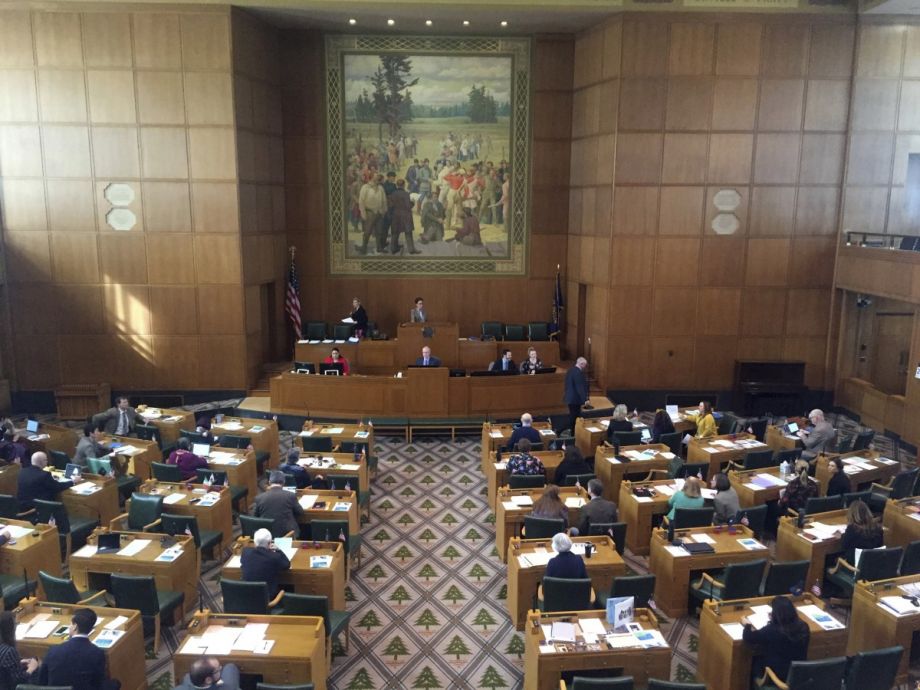On Wednesday, Organizer, Jesse Sharpe told a webinar about how he was living in an apartment complex in Ashland, Oregon, when, in the course of one year, his rent was raised by $125, then $50, then $125 again. He knocked on his neighbors’ doors and realized they had all gotten the same rent increases. Then he found out that his landlord owned six more apartment buildings on the same street, and those tenants had had their rents raised repeatedly as well.
Small cities, like those in southern Oregon, “have really become a breeding ground for these predatory practices,” Sharpe said.
Yesterday, Oregon Governor Kate Brown signed a bill that would cap yearly rent increases at 7 percent, effectively creating the first statewide rent control policy in the United States, according to news reports.
If more rent control policies were adopted in the cities and states where they’re already actively being debated, an additional 12.7 million renters would enjoy a degree of housing stability that is increasingly rare in the country, according to a new report from a coalition of policy and advocacy groups. If rent control were established nationwide, 42 million renter households would be protected, the report says.
“Rent control is the only policy tool that can immediately provide relief to renters facing unaffordable rent increases,” the report says.
The report, called Our Homes, Our Future: How Rent Control Can Build Stable, Healthy Communities, is the work of the Right to the City Alliance, PolicyLink, and the Center for Popular Democracy. It was released Wednesday alongside the webinar in Sharp and other tenants’ advocates and organizers discussed efforts to establish rent-control policies in Oregon, Illinois, and New York.
The report includes a series of data points that illustrate the affordability crisis facing renters nationwide. Between 2001 and 2015, for example, median rents have increased 50 percent while median income for renters has stayed flat. A growing share of seniors are renters, and half of them pay more than they can afford for rent (affordable housing costs are considered 30 percent of income); two-fifths of households with children are renters, and half of those households are cost-burdened; three-fifths of black and Latinx renters are cost-burdened, and women of color face the most serious affordability challenges around the country, according to the report.
“The private rental market has never met the needs of low-income renters and government subsidies have always been insufficient, but a confluence of factors has widened the gap,” the report says.
According to the report, rent control is often the largest source of affordable housing in cities that have created such policies. Tenants living in rent-controlled units pay less than tenants in unregulated apartments, and they move less frequently. The report also cites studies that challenge some common critiques of rent-control policies — that they lead to higher housing prices in unregulated units, reduce new housing construction, and lead to poor maintenance of units.
Those outcomes can be avoided, the report suggests, by crafting policies that apply to the widest possible number of apartments and include strong tenant protection policies, like “just cause” eviction provisions. Rent-control policies should also maximize long-term affordability by being made to apply across tenancies, when apartments turn over, and not just within the tenure of a single renter, the report says, and “tenants should play a central role in program design and implementation.”
Juanita Armador, a mother of ten children and member of the Kingston Tenants Union, in New York, grew up in lower Manhattan, an area which is now among the least affordable in the country. Armador is now fighting displacement in Kingston as part of the Upstate-Downstate Housing Alliance.
“If you see my old neighborhood, in Alphabet City, they made it so unwelcoming that they pushed us out little by little,” Armador said in the webinar on Wednesday.
In addition to Oregon, the report cites campaigns for statewide rent-control policies in California, Colorado, Illinois, New York, and Washington, as well as local campaigns in Providence and Philadelphia. Tenant organizing has been at the center of every successful rent-control campaign, the report says.
Salewa Ogunmefun, political director for One Pennsylvania, a group that helped organize a successful campaign for “fair workweek” protections in Philadelphia, tells Next City that the rent-control campaign is in the very earliest stages. Organizers have begun knocking on doors in Southwest, West, and North Philadelphia to talk about housing issues, but haven’t yet formulated any specific policy demands, she says.
“These organizations and movements are the crucibles where new campaigns and new strategies are forged, and where people come together across race, income, education, age, and language to create common agendas and advocate for new policies and new rights,” the report says. “Investing in tenant organizing in all types of communities — from the traditional centers of renter organizing like San Francisco, Boston, and New York, to small towns, suburbs, rural areas, and mobile home parks — is key to making rent control possible.”
This article is part of Backyard, a newsletter exploring scalable solutions to make housing fairer, more affordable and more environmentally sustainable. Subscribe to our weekly Backyard newsletter.

Jared Brey is Next City's housing correspondent, based in Philadelphia. He is a former staff writer at Philadelphia magazine and PlanPhilly, and his work has appeared in Columbia Journalism Review, Landscape Architecture Magazine, U.S. News & World Report, Philadelphia Weekly, and other publications.
Follow Jared .(JavaScript must be enabled to view this email address)


















